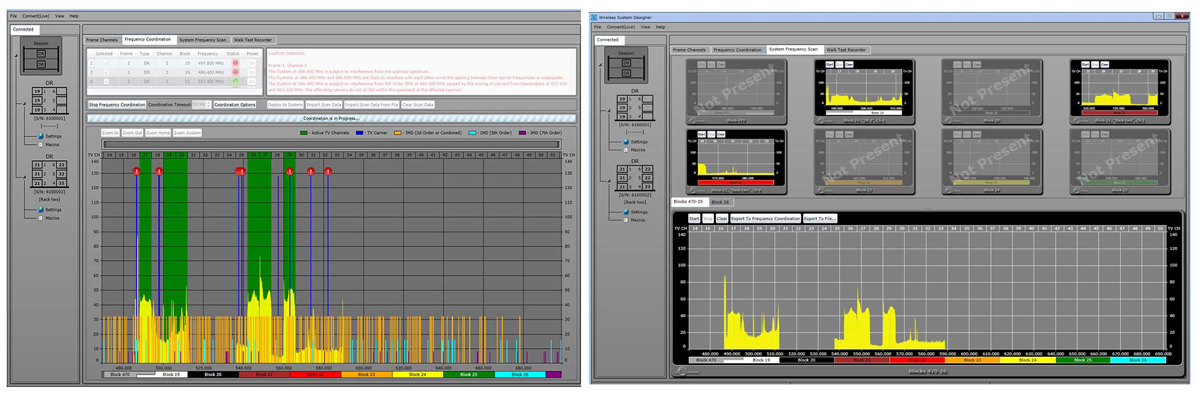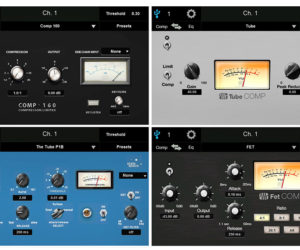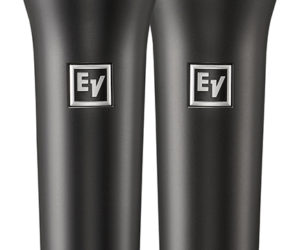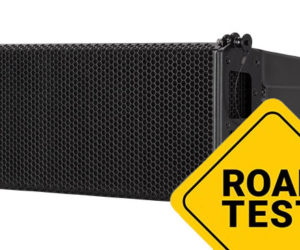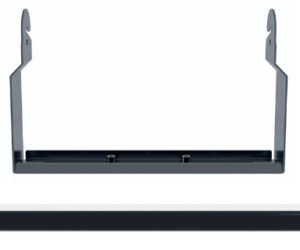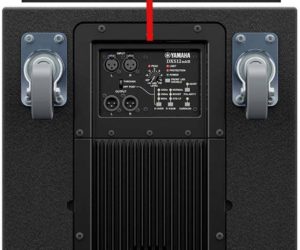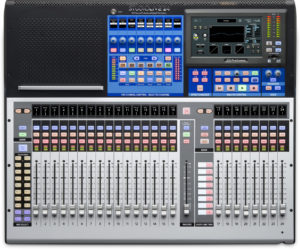Lectrosonics has been in the RF game for a long time, a leader in many respects in developing robust technologies, smart solutions, and long-lasting professional products. Chances are you’ve heard Lectrosonics gear in movies and broadcast programming as well as in touring, theater and installation applications.
The company’s latest development is Duet, a digital wireless IEM/IFB (in-ear monitoring/interruptible foldback) system that may just increase that awareness. As with all other Lectrosonics gear I’ve used, Duet is packaged very smart. I smiled seeing the confident warning sticker ensuring a reliable piece of gear – apparently able to withstand a prehistoric stomp.
Duet is comprised of the M2T half-rack transmitter and the M2R belt pack receiver, both with all-metal housings that feel quite solid. An external power supply for the M2T, two AA lithium batteries for the M2R, rack mount kit, antennas, USB cable and an excellent manual round out the package.
Basic Parameters
While the M2T transmitter is a half-rack unit, it offers two stereo RF carriers that provide the ability to transmit two independent stereo channels. In addition, the transmitter can be configured to transmit four mono audio channels.
The rear of the unit has four combo XLR/TRS jacks, two Dante network ports, two BNC antenna connections, a networking port for monitoring and setup, and a power connection. On the front panel there’s a nice color LCD display, 1/8-inch headphone jack, headphone level, power switch, IR sync port, and a micro “B” USB port.
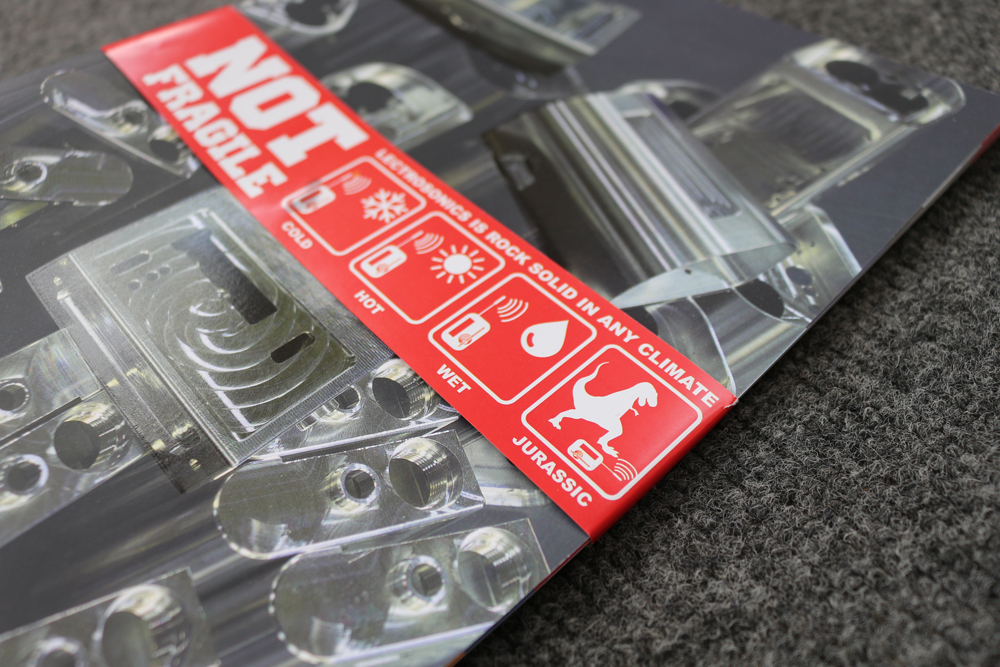
High-quality membrane buttons take care of navigation, working using the usual menu/select, back, up and down, respectively. There are also four additional buttons labeled “A1, A2, B1, B2” that select cuing functions.
The M2R receiver pack comes with a solid knob, four membrane buttons, IR sync port, RF link indicator (blue is “on”), and a full color screen. A unique and powerful feature of is true diversity, indicated by its two antennas.
Battery life is estimated at 3.5 to 4 hours for alkaline, 7 to 7.5 hours for lithium, and about 5 hours for NiMh (2500 mA/H). An indicator marked “BATT” indicates health of the battery, in addition to an icon on the screen.
A few stand-out capabilities include an adjustable limiter that offers additional gain and threshold settings, as well as a high-frequency boost with a choice of corner frequencies of 5 or 7 kHz.
The pack’s software is easy to navigate, and the LCD backlight can be configured to turn off after 30 seconds, 5 minutes or never.
Blazing New Trails
Conventional analog wireless is based on FM transmission (frequency modulation – think of your favorite FM radio station). In order to maintain high, albeit limited, audio fidelity, a process called companding is often used that compresses the audio signal being transmitted and then expands it on the receiving end. This is in addition to the multiplexing process to carry two audio channels on one RF carrier.
The downsides of these processes can include reduced dynamic range, channel separation, stereo imaging and frequency response, all of which are quite important in the IEM world. However, Lectrosonics has developed a proprietary digital RF process that aims to do away with the limitations of conventional FM transmission while promising flat frequency response, wide dynamic range, solid stereo imaging and no crosstalk, low distortion and very low latency.
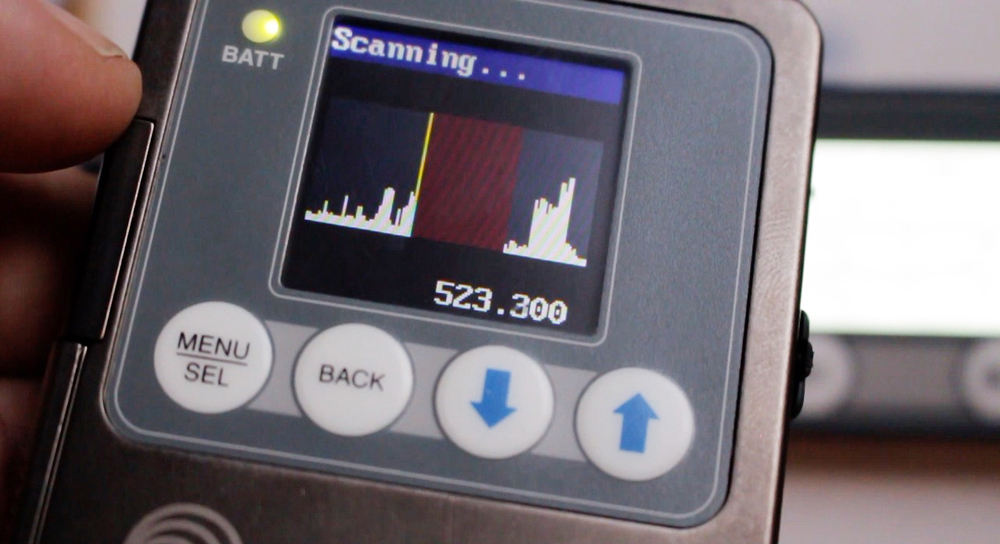
What about latency? Digital processes take time, albeit on a very small scale, yet this delay or latency, can contribute to problems when used in the IEM context, especially with singers.
A simple test: grab some headphones and a microphone. On the console, delay your input in millisecond increments while monitoring your own voice. You’ll start to notice a slight change with how you’re hearing yourself through your own bone conduction and then through your ears.
This difference can be distracting and lead to some “un-EQuable” challenges. However, with Duet, Lectrosonics has obviously spent quite a bit of time on minimizing this delay, getting it to 1.4 milliseconds with analog input and 2.2 milliseconds when using Dante – quite impressive.
Another nice, and very useful, feature available of the M2R pack is a mixer function. This allowed me to choose to hear the stereo mix, swap left and right, both mono channel one and two, mono left, mono right or custom.
I can see this as quite helpful in developing several custom IFB mixes for different talent without needing separate transmitters. (For example, a mono program and producer feed, another just needs program, another just needs producer, and so on.) It could also be beneficial for quickly setting up custom crew mixes as well. The level adjustments can be made on the pack with ease.
In addition, there’s what Lectrosonics calls “FlexList,” which is the ability to “load” a pack with several frequencies. It’s another powerful feature, helping with troubleshooting, fast back-up packs and the obvious cueing application.

